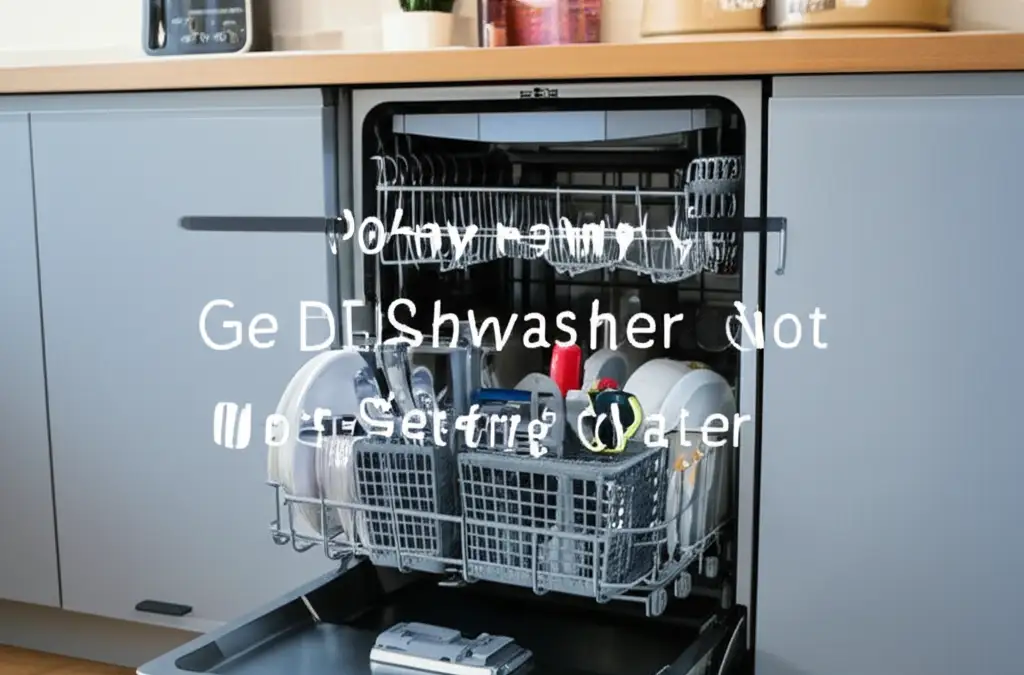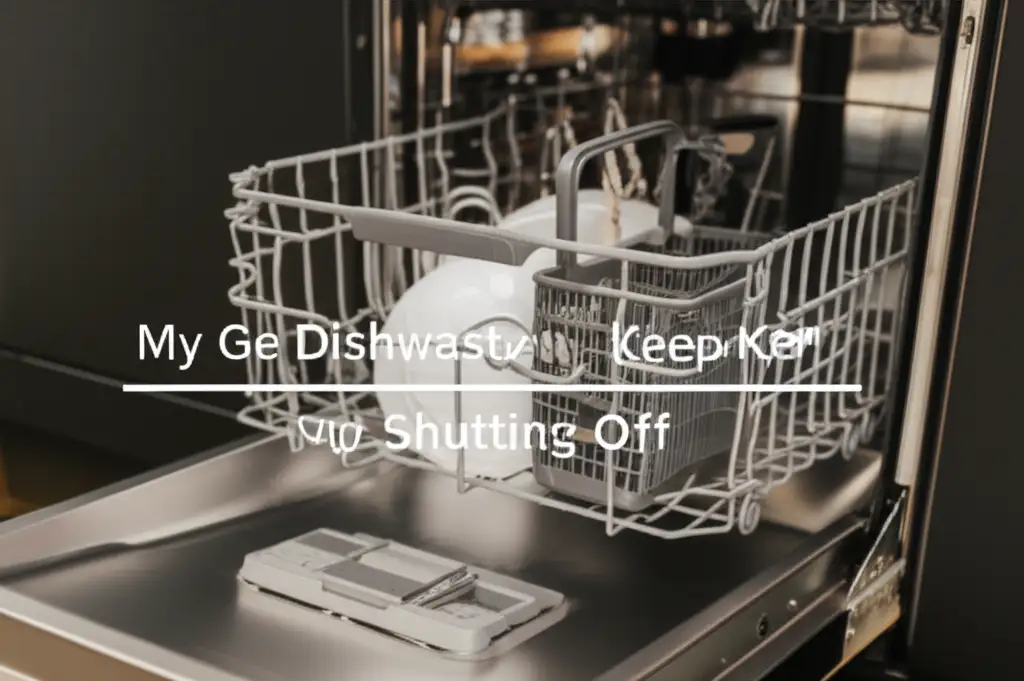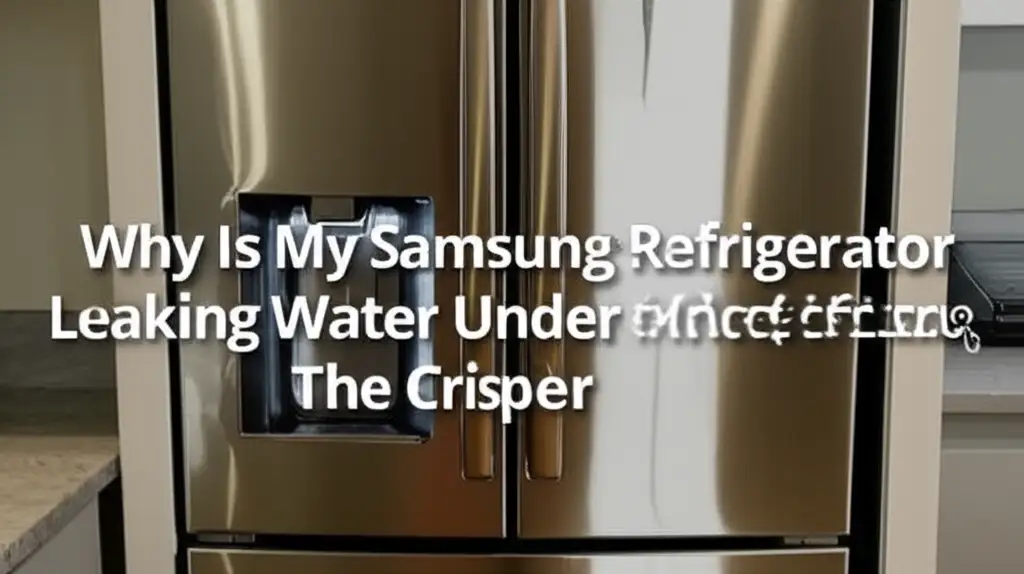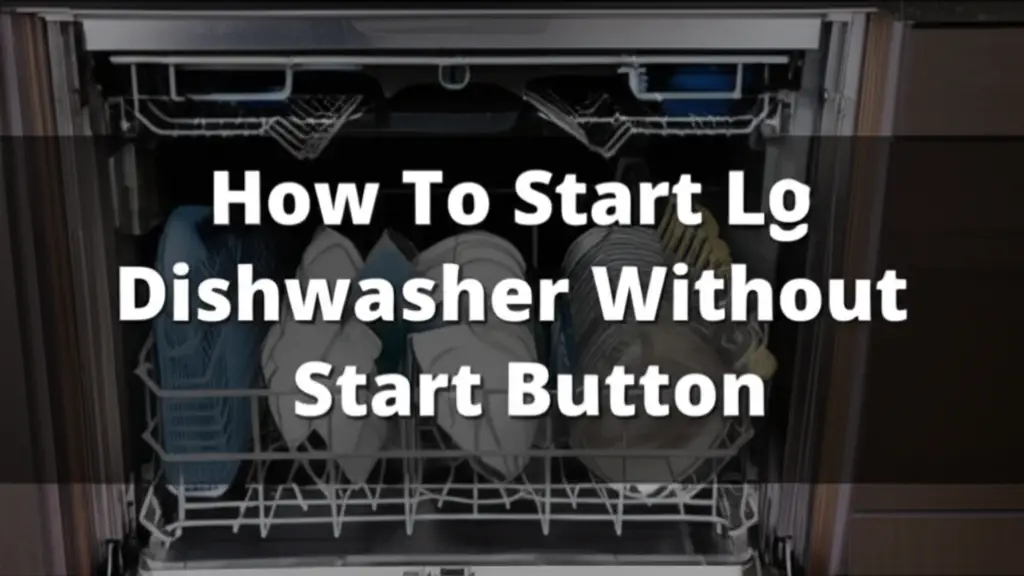· Katria Melrose · Home Appliances · 18 min read
Why Is My Ge Dishwasher Not Getting Water

Why Is Your GE Dishwasher Not Getting Water?
It can feel incredibly frustrating when you load your GE dishwasher, start a cycle, and then realize it is not filling with water. A dishwasher that does not get water cannot clean dishes. This common problem often stems from a few specific areas. I understand how disruptive this issue can be to your daily routine.
This guide will explain why your GE dishwasher might not be getting water. We will cover various components, from simple supply line checks to more complex internal part failures. My goal is to help you diagnose the problem. You will learn actionable steps to fix it. We will explore troubleshooting methods and when to call for professional help.
Takeaway
- Check basic water supply first: shut-off valve, hose kinks, and house water pressure.
- Inspect the water inlet valve for clogs or electrical faults.
- Ensure the float switch moves freely and is not stuck.
- Verify the door latch engages fully and the control board functions.
- Clean filters and the sump to prevent blockages affecting water entry.
Concise Answer to Your GE Dishwasher Water Problem
Your GE dishwasher is likely not getting water due to a closed water supply valve, a kinked inlet hose, a faulty water inlet valve, a stuck float switch, or a problem with the door latch or control board. Begin by checking the easiest external factors first.
Confirming Your GE Dishwasher’s Water Supply Basics
When your GE dishwasher does not get water, the first step is to check the most basic elements of its water supply. You should not assume a major internal component has failed right away. Many times, the issue is something simple you can fix quickly. Ensuring proper water flow from the source is crucial before troubleshooting the appliance itself.
Inspect the Water Shut-Off Valve
Every dishwasher connects to a water supply line, typically with a shut-off valve nearby. This valve allows you to turn off water to the dishwasher for maintenance or repairs. Sometimes, this valve gets accidentally bumped or turned off. You should check under your sink or behind the dishwasher for this valve.
Make sure the valve is fully open. If it is closed, turn it counter-clockwise to open it completely. This simple check can save you a lot of time and effort. I have seen many people overlook this step.
Examine the Water Inlet Hose
The water inlet hose connects your dishwasher to the household water supply. If this hose becomes kinked or twisted, water cannot flow through it properly. A common place for kinks is where the hose bends sharply behind the dishwasher or under the sink.
You should carefully pull the dishwasher out a bit to inspect the hose. Smooth out any kinks you find. Also, check the hose for any visible damage, such as cracks or leaks. A damaged hose may restrict water flow or cause other issues, such as a GE dishwasher leaking from the bottom.
Verify House Water Pressure
Your GE dishwasher needs adequate water pressure to fill correctly. If the overall water pressure in your house is low, the dishwasher might not get enough water. You can test your house water pressure by turning on a nearby kitchen faucet. Observe the strength of the water flow.
If the faucet flow is weak, contact your water utility company or a plumber. They can help diagnose and resolve low water pressure issues. Remember, your dishwasher depends on a steady supply. This check applies not only to dishwashers but also to other GE appliances, like if your GE washing machine won’t fill with water.
Understanding the GE Dishwasher Inlet Valve
The water inlet valve is a vital component. It controls the flow of water into your GE dishwasher. When you start a wash cycle, the dishwasher’s control board sends an electrical signal to this valve. The valve then opens, allowing water to enter the tub. If this valve malfunctions, your GE dishwasher will not get water, no matter what.
How the Inlet Valve Works
The water inlet valve is an electrically operated solenoid valve. It has a coil that, when energized, opens a diaphragm inside the valve. This action allows pressurized water from your home’s supply line to flow into the dishwasher. Once the desired water level is reached, the control board de-energizes the coil, and the valve closes. This system ensures precise water management during each cycle.
A problem with this valve is a very common reason for a GE dishwasher not filling with water. The same principles apply to many different brands of dishwashers too, so if you’ve ever wondered why a Samsung dishwasher is not getting water, the inlet valve is often a suspect there too.
Signs of a Faulty Water Inlet Valve
Several symptoms indicate a failing water inlet valve. The most obvious sign is that your GE dishwasher does not get water at all. You might also notice a humming noise coming from the valve, but no water entering the tub. This humming suggests the valve is receiving power but not opening.
Another sign could be very slow filling. If the valve is partially clogged or failing, water might trickle in slowly, prolonging the wash cycle. In some cases, a faulty valve might leak, creating puddles under the dishwasher.
Steps to Test and Replace the Inlet Valve
Testing the water inlet valve requires a multimeter to check for electrical continuity and proper voltage. First, disconnect power to the dishwasher for safety. Access the valve, which is usually located at the bottom front or side of the appliance, where the water supply hose connects.
- Check for Clogs: Disconnect the water supply line from the valve. Check the small screen inside the valve’s inlet for debris. A clogged screen can prevent water flow. Clean it if necessary.
- Test Electrical Connection: Use a multimeter to test the resistance (ohms) of the valve’s solenoid. Refer to your GE dishwasher’s service manual for the correct ohm reading. A reading outside the specified range means the solenoid is faulty.
- Test for Voltage: With the dishwasher reconnected to power (be extremely careful), start a cycle. Use the multimeter to check for 120V AC at the valve’s terminals when it should be opening. If there’s no voltage, the problem might be the control board. If there is voltage but no water, the valve is bad.
If the valve tests faulty, it needs replacement. Replacement involves turning off water and power, disconnecting the old valve, and installing a new one. Ensure you buy a genuine GE replacement part for compatibility.
The Float Switch and GE Dishwasher Water Levels
The float switch is another critical component that directly impacts whether your GE dishwasher gets water. This small device acts as a safety mechanism. It prevents the dishwasher from overflowing by sensing the water level inside the tub. When the water reaches a predetermined height, the float rises, activating the switch. This signals the control board to shut off the water inlet valve.
Purpose of the Float Switch
The primary purpose of the float switch is to protect your home from water damage. Without it, the dishwasher could continue filling until water spills out onto your floor. It acts as a mechanical “fill sensor.” If the float switch is stuck in the “up” position, it tricks the dishwasher into thinking the tub is already full. This prevents the dishwasher from taking in any water at all.
This means even if all other components are working perfectly, a faulty or stuck float switch will stop your GE dishwasher from filling. It is a common point of failure.
Checking for Obstructions
The float switch is typically located at the bottom of the dishwasher tub, often under the lower spray arm. It looks like a small plastic cap or disc. Debris, food particles, or even a fallen utensil can get lodged underneath the float, preventing it from moving freely.
You should first visually inspect the area around the float. Remove any visible obstructions. You can gently push the float up and down with your finger to ensure it moves smoothly. If it feels sticky or jammed, try to clean around its base. Sometimes, just wiping away grime or pulling out a small piece of food is enough to resolve the issue.
Testing the Float Switch
If clearing obstructions does not help, you might need to test the float switch itself. First, disconnect the dishwasher from power. Locate the float switch assembly. It usually has two wires connected to it. You will need a multimeter for this test.
- Access the Switch: You may need to remove the lower spray arm and possibly a cover to access the wiring terminals of the float switch.
- Test Continuity (Down Position): With the float in its normal, down position (meaning the tub is empty), use your multimeter to test for continuity across the switch terminals. Most float switches should show continuity (a closed circuit) when down. This tells the control board it is safe to fill.
- Test Continuity (Up Position): Manually lift the float to its “up” position. The multimeter should now show no continuity (an open circuit). This tells the control board to stop filling.
If the switch does not change its state (always open or always closed), it is defective and needs replacement. A faulty float switch is a mechanical component that cannot be repaired, only replaced.
Troubleshooting GE Dishwasher Control Board and Door Latch
Beyond water supply and specific fill components, two other critical areas can prevent your GE dishwasher from getting water: the control board and the door latch assembly. These parts relate to the dishwasher’s safety and operational logic. They ensure the appliance starts only when conditions are safe and correct.
The Role of the Control Board
The control board is the “brain” of your GE dishwasher. It sends electrical signals to all the components, including the water inlet valve. If the control board is faulty, it might not send the signal to open the water inlet valve. This means the dishwasher never attempts to fill. Signs of a failing control board include:
- The dishwasher does not respond to any commands.
- Lights on the control panel blink erratically or do not light up.
- The dishwasher stops mid-cycle.
- Specific error codes appear on the display (refer to your owner’s manual).
Diagnosing a control board issue can be challenging. It usually requires specialized knowledge and testing equipment. If you have checked all other common issues and suspect the control board, it might be time to consider professional help. A malfunctioning control board can also be responsible if your GE dishwasher keeps turning on by itself.
Inspecting the Door Latch Assembly
The door latch assembly is a safety feature. It prevents the dishwasher from operating unless the door is fully closed and latched. If the door latch is broken or misaligned, the dishwasher’s control board will not receive the signal that the door is shut. As a result, the wash cycle will not start, and the dishwasher will not get water.
Here’s how to check it:
- Visual Inspection: Look at the door latch mechanism on the dishwasher tub and the strike plate on the door itself. Ensure there are no broken plastic pieces or misalignment.
- Close the Door Firmly: Try closing the dishwasher door with a bit more force. Listen for a distinct “click” that indicates the latch has engaged.
- Test the Switch: Some dishwashers have a door switch that activates when the latch closes. With the power off, you can sometimes test the continuity of this switch with a multimeter. If the switch does not show continuity when the door is latched, it is likely faulty.
If the door latch mechanism is visibly broken or the door switch does not respond, replacing the door latch assembly is usually the solution. This is often a relatively simple repair. It ensures the dishwasher gets the necessary signal to begin its wash cycle and draw in water.
Addressing Clogs in Your GE Dishwasher Filter and Sump
While clogs in the filter and sump are more commonly associated with drainage issues or dishes not getting clean, they can indirectly affect your GE dishwasher’s ability to get water. If the dishwasher’s system senses a blockage, it might prevent new water from entering to avoid overflow. A severely clogged sump can also sometimes mimic a drainage issue, leading the dishwasher to pause or not proceed with the fill cycle.
How Clogs Affect Water Entry
A primary reason for a dishwasher not getting water is often tied to the fill components. However, a major blockage in the sump or filter can sometimes confuse the dishwasher’s sensors. The dishwasher might detect that water is not draining properly or that the current water level is incorrect. This can happen even if the tub appears empty. When this occurs, the control system might halt the cycle, preventing any new water from entering the unit. This is the dishwasher’s way of trying to prevent an overflow or further damage.
Think of it this way: if your dishwasher already has standing water at the bottom, it won’t try to add more. While the issue here is “not getting water,” problems like a GE dishwasher holding water in the bottom can be related. If the dishwasher thinks it still has water or cannot drain it, it will not fill. Similarly, if you find your GE dishwasher has standing water after the cycle, this could indirectly stop the next cycle from filling properly.
Cleaning the Sump and Filter
Regular cleaning of the dishwasher filter and sump area is essential maintenance. It prevents many common dishwasher problems. This process is generally straightforward for most GE models.
- Locate the Filter: Most GE dishwashers have a removable filter at the bottom of the tub. It is usually cylindrical or flat. You might need to twist or lift it to remove it.
- Remove and Clean: Take out the filter and rinse it under running water to remove food particles and debris. You can use an old toothbrush to scrub away stubborn grime.
- Clean the Sump Area: The sump is the basin below the filter. Use a sponge or paper towel to wipe out any standing water, grease, or food residue from this area. Check for anything that might be blocking the float switch or drain.
- Reassemble: Once clean, place the filter back into its position. Ensure it is securely locked in place to prevent debris from entering the pump.
Regularly cleaning the filter, perhaps once a month or as needed, helps maintain proper water circulation and drainage. It reduces the chance of issues that indirectly affect water intake. If you have an older GE model, you might want to learn how to clean the filter in an old GE dishwasher.
When to Consider Professional GE Dishwasher Repair
You have checked the water supply, inspected the inlet valve, verified the float switch, and looked at the door latch and control board. If your GE dishwasher is still not getting water after all your troubleshooting efforts, it might be time to call a professional appliance technician. There are certain situations where DIY repair becomes too risky or complex.
You should consider professional help in these cases:
- Complex Electrical Issues: If you suspect a problem with the control board or wiring harness, diagnosing and repairing these components can be dangerous. Improper handling of electrical parts can cause injury or further damage to the appliance. Technicians have specialized tools and training to safely test and replace these parts.
- Specialized Tools Required: Some repairs need specific tools, like pressure gauges or advanced multimeters, that a typical homeowner might not possess. A professional technician will have all the necessary equipment to perform accurate diagnostics.
- Lack of Experience: If you are uncomfortable working with appliances or do not have experience with similar repairs, it is best to leave it to the experts. Attempting a repair beyond your skill level can lead to more costly damage.
- Safety Concerns: Anytime you deal with water and electricity, there are inherent risks. If you feel unsafe at any point during the troubleshooting process, stop immediately. Call a qualified professional. They prioritize safety during all repairs.
- Warranty Considerations: If your GE dishwasher is still under warranty, attempting a DIY repair might void it. Check your warranty terms before starting any complex troubleshooting or repairs. A professional service call from an authorized technician will usually preserve your warranty.
A professional technician can quickly identify the root cause of why your GE dishwasher is not getting water. They can provide an accurate estimate for the repair. They also ensure the repair is done correctly and safely, giving you peace of mind.
Preventative Measures for GE Dishwasher Water Issues
Preventing problems is always better than fixing them. Taking a few proactive steps can significantly reduce the chances of your GE dishwasher not getting water in the future. Regular maintenance and careful use extend the life of your appliance and ensure its optimal performance.
Here are some preventative measures you can implement:
- Regular Filter Cleaning: Make it a habit to clean your dishwasher’s filter regularly, ideally once a month. Food particles and debris accumulate over time. A clean filter ensures proper water flow and drainage, preventing clogs that can indirectly affect water intake.
- Clear the Sump Area: While cleaning the filter, also wipe out the sump at the bottom of the dishwasher tub. Remove any lingering food scraps or grime. This prevents blockages around the float switch and ensures clear pathways for water.
- Avoid Overloading: Do not cram too many dishes into the dishwasher. Overloading can block spray arms, preventing water from reaching all items. It can also potentially interfere with water levels or flow. Proper loading ensures efficient water circulation.
- Check Water Pressure Periodically: If you live in an area with fluctuating water pressure, occasionally check your household water pressure. This helps you identify if low water pressure is a recurring problem that could affect your dishwasher’s fill cycles.
- Inspect Water Hoses: Once a year, pull out your dishwasher slightly and visually inspect the water inlet hose for any kinks, cracks, or signs of wear. Smooth out any kinks you find. Address minor issues before they become major problems.
- Use Proper Detergent: Always use dishwasher-specific detergent in the correct amount. Too much detergent can create excessive suds. This might cause the float switch to rise prematurely, signaling the dishwasher to stop filling. Low-quality detergents can also leave residue.
- Run a Hot Water Cycle Occasionally: Running an empty dishwasher on a hot water cycle with a dishwasher cleaner can help remove mineral deposits and grease buildup. This keeps internal components, including the water inlet valve, free from residue.
- Avoid Forcing the Door: Always close the dishwasher door gently but firmly. Forcing it can damage the door latch assembly over time. A damaged latch can prevent the dishwasher from starting and filling with water.
By following these preventative tips, you can help ensure your GE dishwasher continues to operate smoothly. This reduces the likelihood of encountering frustrating issues like a lack of water supply. Regular care prolongs the life of your appliance.
FAQ Section
Why does my GE dishwasher start but not fill with water?
If your GE dishwasher starts a cycle but does not fill with water, the most common culprits are a closed water supply valve, a kinked water inlet hose, or a faulty water inlet valve. A stuck float switch or a malfunctioning door latch preventing the cycle from fully initiating are also frequent causes. Check these items first.
How do I reset the water intake on my GE dishwasher?
There is no specific “reset” for water intake. You reset the dishwasher’s main control by turning off its power at the circuit breaker for 1-2 minutes, then turning it back on. This might clear minor electrical glitches. For physical obstructions like a stuck float or clogged inlet screen, you must physically clear them.
What is the role of the float switch in a GE dishwasher?
The float switch detects the water level inside the dishwasher tub. It prevents overfilling. If the water reaches a certain height, the float rises, activating a switch that signals the control board to stop the water inlet valve. If the float is stuck in the “up” position, the dishwasher will not fill.
Can low water pressure affect my GE dishwasher’s ability to fill?
Yes, low household water pressure can definitely prevent your GE dishwasher from filling properly or completely. Dishwashers require a certain level of water pressure to operate efficiently and fill within the programmed time. If your house has low water pressure, the dishwasher may not draw in enough water or may pause the cycle.
How long should it take for a GE dishwasher to fill with water?
The initial fill time for a GE dishwasher typically ranges from 60 seconds to 2 minutes, depending on the model and the specific wash cycle chosen. Factors like water pressure can influence this. If it takes significantly longer or no water enters at all, a problem exists.
Where is the water inlet valve on a GE dishwasher?
The water inlet valve on most GE dishwashers is located at the bottom front of the appliance, often behind the toe kick panel or accessible from underneath. It is where the main water supply hose connects to the dishwasher. Always disconnect power and water before attempting to access or inspect this component.
Conclusion
Discovering your GE dishwasher is not getting water can halt your kitchen routine. However, as we have explored, many of these issues stem from common, often simple, problems. You now know how to check the fundamental water supply, inspect the water inlet valve, and troubleshoot the float switch. We also covered the control board and door latch assembly, plus the impact of clogs.
By systematically working through these potential causes, you can diagnose why your GE dishwasher is not getting water. Many times, a simple adjustment or cleaning is all that is needed. For more complex issues, knowing when to call a professional ensures a safe and effective repair. Regular maintenance is key to keeping your GE dishwasher running smoothly for years to come. Do not let a lack of water stop your dishes from sparkling!





